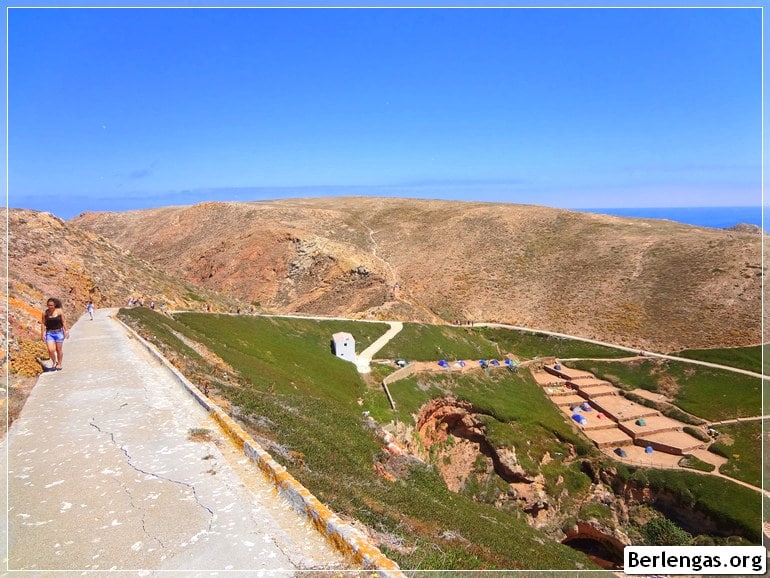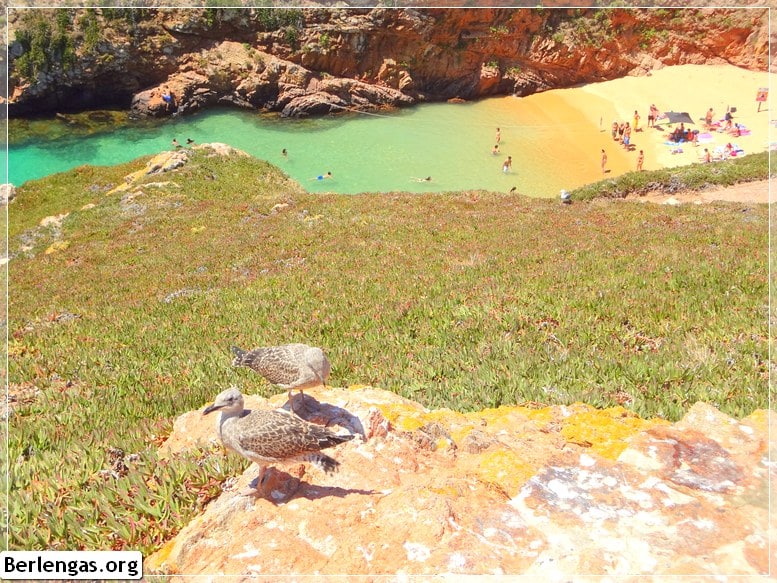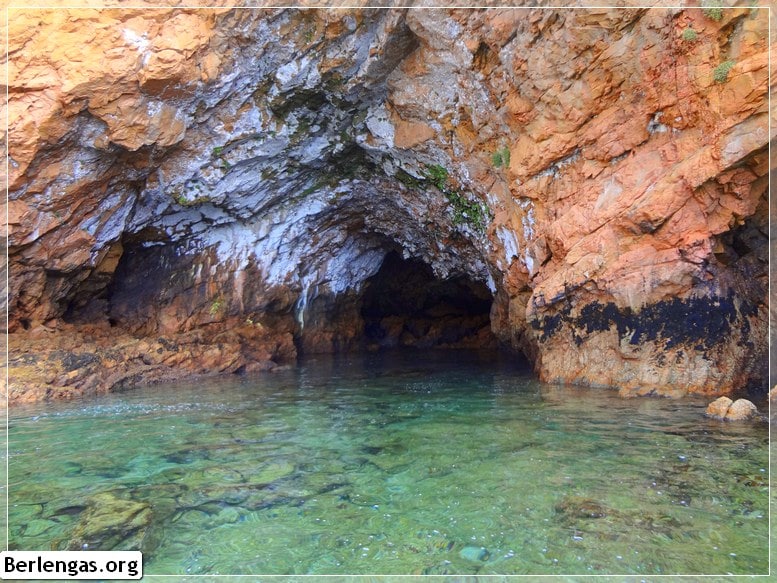Index
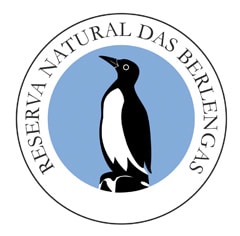
The Berlengas is a place where the natural landscape is of remarkable beauty due to the minimal intervention by man, being wholly preserved.
This little archipelago inside the islands Portugal has to offer with tropical weather, as it features crystal clear waters, in shades of green, with truly wild features.
The Nature Reserve has a significant and vast number of unique animal and plant species in the Portuguese territory.
Since Berlengas is an area with a lot of scientific interest at the botanical level, at the flora level, we can find more than one hundred species of plants, such as yellow marigolds, poppies, and dies, armerias, silenes, among others.
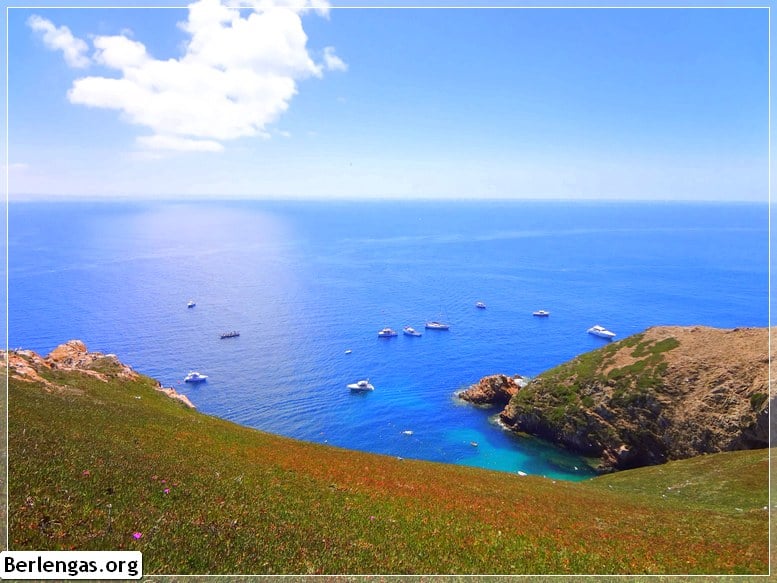
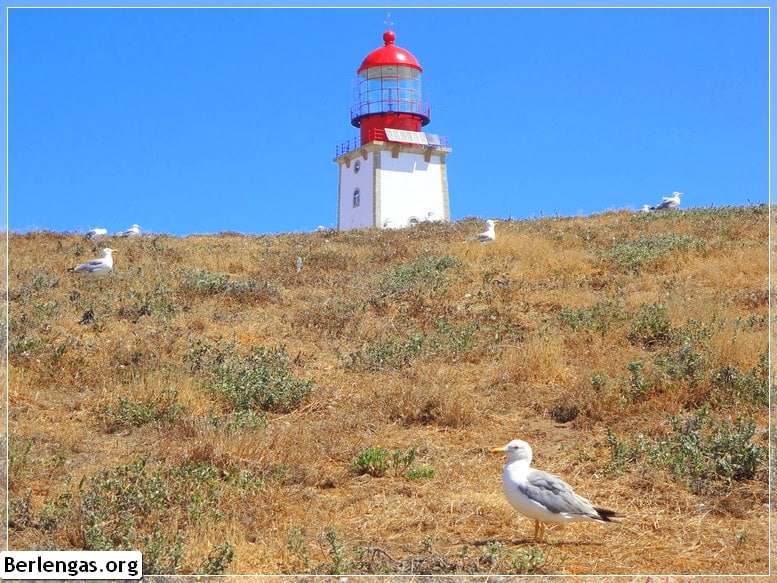
The fauna is equally rich, represented by birds that nest only in the Berlengas, such as the Airo, the symbol of this natural reserve (a bird with similar characteristics to the penguin in Antarctica).
Other birds in this small archipelago are the peregrine falcon, the Cagarra, the Rolas-do-Mar, the crested cormorant, the swallow, and the yellow-legged gull, also known as the seagull.
Berlengas is an essential point of supply and passage for migratory birds, giving us the opportunity, through binoculars, to enjoy this mobile phenomenon.
There are many fish species, such as the wild rabbit, black rat, and bocage gecko.
In the 10 ha of the marine reserve, they are also identified around seventy species of fish (mackerel, mackerel, sardines, etc.), as well as other marine species, such as octopus, starfish, or anemones.
What to do in the Berlengas Nature Reserve
Bird and animal watching
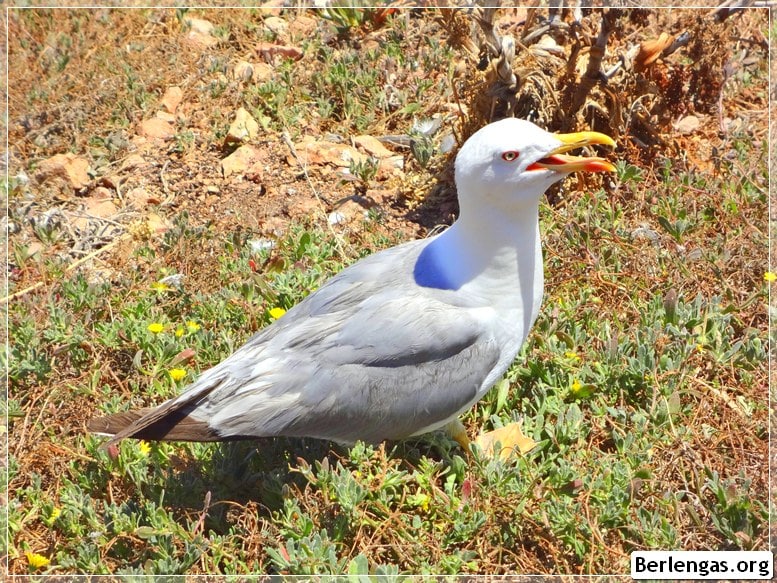
Due to its location, Berlengas is widely used by migratory birds, which at the right time are a delight to ornithologists. In any case, resident species can be observed throughout the year.
Among the birds that nest in the Berlengas, the Airo stands out, which was also adopted as a symbol of the Berlengas Nature Reserve and has apparent similarities with penguins.
Other birds that are common sightings here: Peregrine Falcon, Pale Swift, Rabirruivo, Kestrel, Poop (these birds only come ashore at night, so it’s not easy to see them), Crested Cormorant, Castro’s Rock, Cruet, Gull yellow-legged, dark-winged gull and herring gull.
Less frequently, the following species can be seen:
- forehead albatross,
- forktail millet,
- American Plover,
- Sabine Gull
- Striped-billed Gull,
- Richard’s little thing
- felosa-jaundice,
- little flycatcher,
- Lapland cliff.
Some of the best places for bird watching: are the lighthouse plateau, the cliffs sheltered from the winds, and the fig tree, the only tree in the Berlengas, which stands next to the monastery beach.
Among the mammals, there are not many species: the Black Rat, accidentally introduced to the islands and a problem for the nesting of some species of birds, is found in the Berlengas and the Rabbit, which was also a delight for the Portuguese monarchs who moved here. Hunting them, from the 17th century.
Carbonell’s geckos are likely to be seen during a visit, but the other reptile species on Berlenga, the ocellated lizard, have very small populations and are rare.
Walking routes in Berlengas
To the delight of the visitors, two hiking trails were created, in addition to the presence of people off the trails prepared to preserve the delicate ecosystems in the archipelago.
The Ilha Velha trail
- The Ilha Velha trail is shorter than the two existing in Berlenga. It is 1.5 km long and circular. The floor sometimes has a particular inclination, and having many loose stones invites special care and could be more suitable for light footwear, especially sneakers. From the top of the cliffs, you can see some of the islets surrounding the Berlengas, such as the Estelas or the Farilhões, with Cabo Carvoeiro and Peniche visible on days with typical visibility.
- There are access marks to other trails and points with romantic names such as Ponto do Capitão or Ponto das Figueiras, but don’t be tempted: it is not allowed to leave the main trail, and access to these places thus indicated is restricted to authorized persons.
- This trail takes the visitor very close to the resident gull colonies, and at times, the layers of feathers can be seen as so dense that they resemble a mat of snow.
The Berlenga trail
- The Berlengas Nature Reserve trail is a 3 km linear trail that can be done immediately after the Ilha Velha trail and takes the visitor to the southwestern tip of the island. The walk begins in the center of Berlenga, where the Fishermen’s Quarter is located, from where you go up to the lighthouse.
- In this ascent, you can see the Carreiro dos Cações, a cove with clear water entering the land on the right side of the road.
- Once at the lighthouse, you will find markings for various trails, but keep in mind that only authorized fishermen can follow them for safety reasons and to safeguard the delicate balance of nature on the island.
- Following the Berlenga trail, you will reach an observation point from where you have one of the best views of Fort São João Baptista. You then descend to this fortress, from where you face another climb that will take you close to the cistern, passing through places of immense beauty and ending near the end of the island.
Beaches in Berlengas
There are beautiful beaches in Berlengas. The most popular is the Carreiro do Mosteiro beach. You can try the smaller beaches, such as Praia do Forte or Praia Cova do Sonho, with reduced sand that almost disappears at high tide but whose intimate nature allows for a very different experience.
Praia do Carreiro do Mosteiro has excellent conditions for bathing. Located near the anchorage. It is about forty meters long, made of golden sand, and has no toilets.
Caves
The Berlengas have several caves accessible by sea, some wrapped in fabulous stories and legends, and have probably been used by humans at some point in history.
Access made individually is practically impossible, but visitors can use the services of the various companies that offer boat trips that show some of the most impressive cavities. These boat trips also provide additional opportunities to see birds that nest on cliffs and inaccessible places escaping authorized viewing trails.
The largest cave is the Furado Grande, which completely crosses Berlenga, with a 70-meter tunnel height of 20 meters, particularly those of Cova do Sonho and Furado Pequeno, the latter only accessible at low tide.
Several companies operate tours to the caves. The Feeling Berlenga has a substantial advantage: if you cross the Berlengas with them for only 8 euros, you can take the tour to the caves, getting all this for 28 euros.
The Julius also offers tours of this type, which allows greater autonomy in its programs with kayaks, and, finally, you may want to check the conditions provided by Odisseia Viva.
See also : TOP 5 – Operadores en Berlengas
Water activities
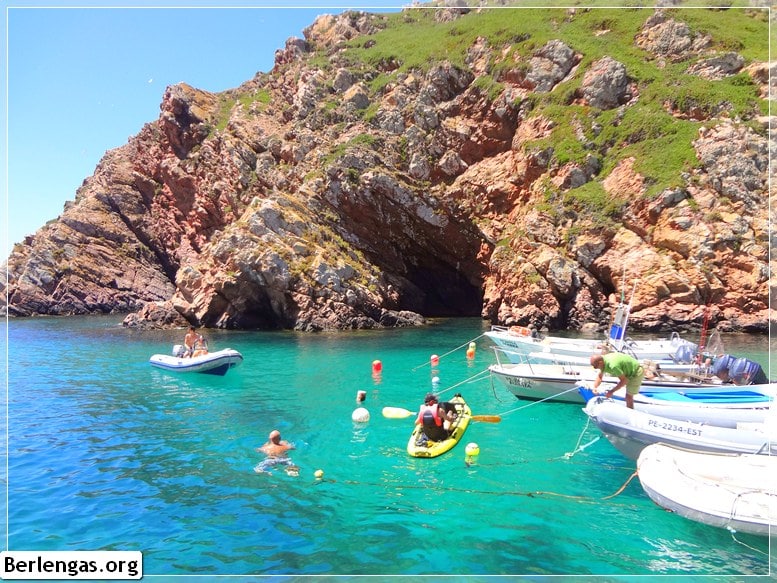
The berlengas have desirable requirements for aquatic and underwater activities. Taking into account the state of the Nature Reserve, the visitor will only have the autonomy to do so with the support of one of the authorized companies.
Diving is probably the most popular activity, with several diving spots either along the Berlengas coast or at points a little further out. The waters surrounding the archipelago have intense aquatic life, and it is possible to observe several species of fish in their natural habitat. In addition, the numerous shipwrecks that occurred there created excellent dive sites, both for the historical value of underwater observation and for the enhancement of animal life that these wrecks always imply.
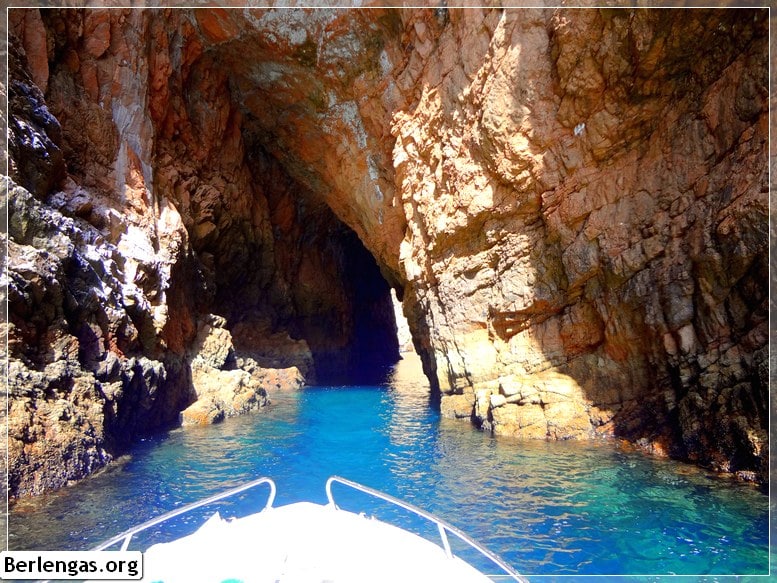
It is also possible to go snorkeling, offering a different experience than proper diving for those not qualified to deal with that technical complexity. An excellent place to try some snorkeling is Praia do Carreiro do Mosteiro, with a few species of fish, such as gilthead bream and catfish, likely to be seen there.
The row is also practiced in the Berlengas, as well as kayaking, an excellent way to visit the caves more independently. Please note that during the high season, it is possible to rent kayaks in Berlenga.
Whale watching
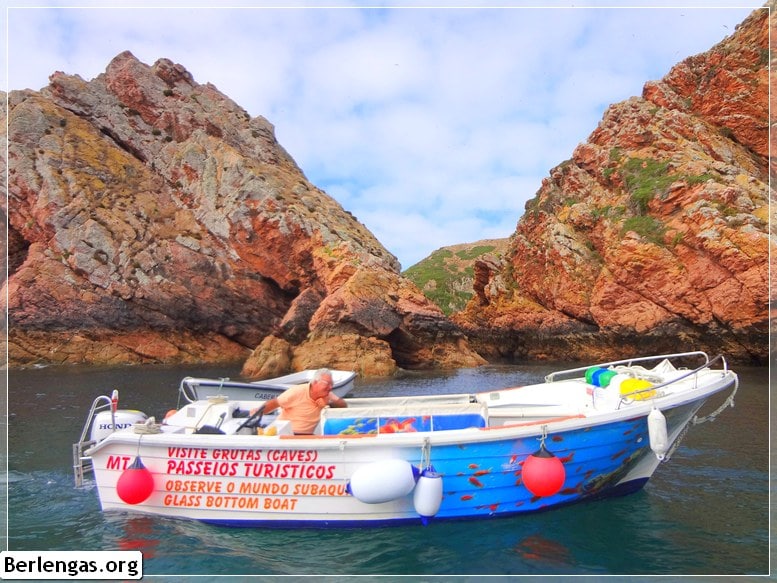
The waters surrounding the Berlengas are suitable for observing cetaceans in the wild. Dolphins are the most seen, to the delight of visitors who can see them in their games, sometimes with spectacular jumps over the water.
But there are other species, such as the bottlenose or the pilot whale, that can be seen in these waters. If you are interested in this activity, consult one of the companies authorized consulte a una de las empresas autorizadas for walks in the sea.

